CHINASE | ENGLISH
bottom
NEWS
Yutu-2: What’s the subsurface structure on the far side of the moon? I will do a “CT” scan
Hi, everyone! I’m Chang’E-4 Probe Yutu-2 Moon Rover. You can call me Bunny. I have stayed on the far side of the moon for a year and two months. Everyone calls me a record-breaking longevous star on the far side of the moon, but I think I’m still young. I know how to do scientific research and how to run, take photos and do “CT” scans, so I’m sort of a slash! I want to be the brightest star on the far side of the moon.
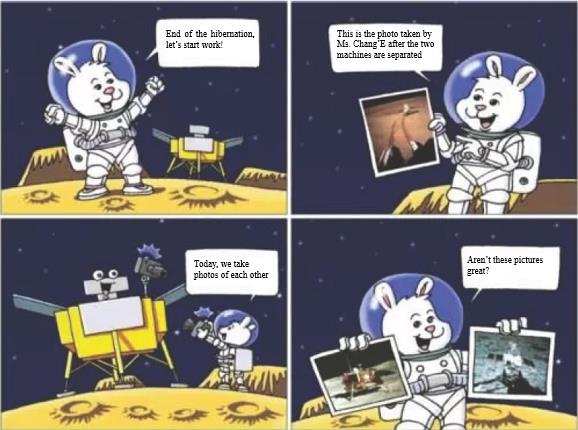
On January 3, 2019, I landed at the bottom of Von Kármán Impact Crater within South Pole–Aitken Basin, the most ancient and biggest South Pole on the far side of the moon. According to researches, Von Kármán Impact Crater was formed in Pre-Nectarian, and its diameter is about 186km.
The terrain is relatively flat inside the crater, while the bottom of the crater is filled by basalt. A big area of the basalt surface is covered by sputtering objects of surrounding big impact craters, and there are also extensively distributed secondary impact craters.What’s the subsurface structure on the surface of the moon, especially the far side of the moon? And what’s the substance composing it? All of these questions remain a mystery.
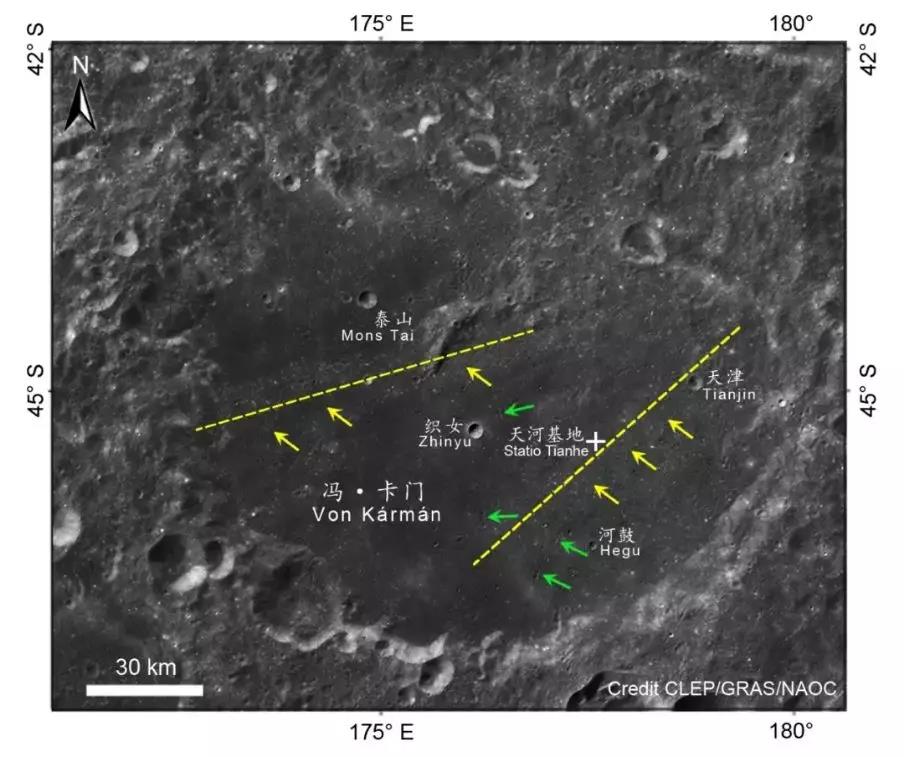
△Yellow Lines and Arrows: Covered Area of Typical Sputtering Objects
Green Arrows: Distribution Area of Typical Secondary Impact Craters
In this regard, I recently cooperated with my ground system scientific research team to do a “CT” scan with my secret weapon—lunar penetrating radar.Firstly, I revealed the geological layered structure within 40m depth below the landing area on the far side of the moon.Today, I will reveal its mysterious veil with you. The following picture is the newest scientific achievement of our Chang’E-4 Task recently published online by an international scientific journal, Science Advances
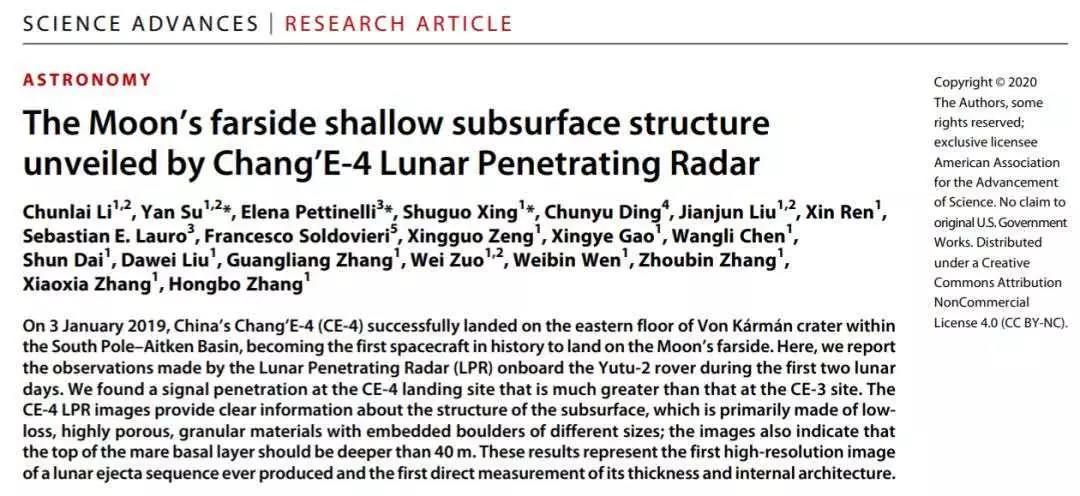
△Research Paper was Published Online by Science Advances
Isn’t it awesome? Sorry, I forgot you don’t understand English. It’s OK, Bunny will translate for you.In this research, it was found that the subsurface substance was made of low-loss lunar soil substance and lots of stones in different sizes, and both the effect and evolutionary mechanism were studied. This scientific research deepens the understanding on lunar collision and the history of volcanic activity, and brings new enlightenment to geological evolution research on the far side of the moon.
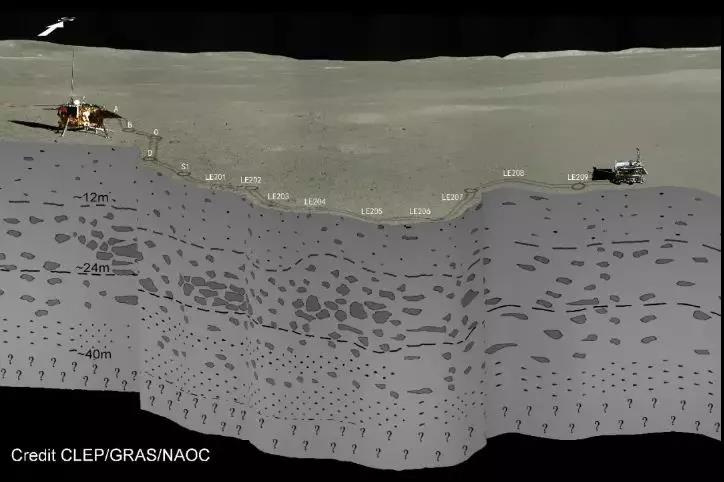
△Schematic Diagram about the Subsurface Structure of Chang’E Landing Area
According to the research, the detected 40m stratum can be roughly classified into 3 layers:
The first layer: Moon’s surface-12m underground, this stratum consists of fine lunar soils, embedded with few stones, and is formed by the weathering of overlapped spurting objects in several impact craters.
The second layer: 12m-24m underground, this layer is the area with the strongest echo intensity on radar image, indicating that it contains lots of stones, and has even formed crushed rock layer and crushed rock pile, mixed in fine lunar soils.
The third layer: 24m-40m underground, this layer shows the radar echo alternately changing in the intensity of light and shade, and is the deposition and weathering product of more ancient sputtering objects in different phases.
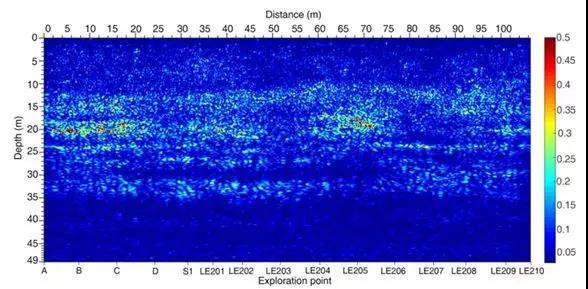
△Radar Image Rebuilt by Lunar Penetrating Radar HF Channel (500MHz) Based on Tomography Inversion Method
Radar echo signal is weak at depth below 40m, so Bunny cannot deduce its substantial characteristics, but this can at least indicate that, near our landing point,the coverage of complete mare lunar basalt can reach to the depth of more than 40m below the Moon’s surface.
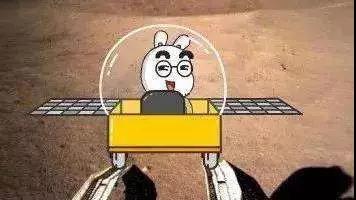
I want to tell you that I’m not the lazy bunny told in The Race between Hare and Tortoise. For more than a year, although I’m far away from home and I miss my owner, I still work very hard, so I’m sort of a model worker on the Moon.
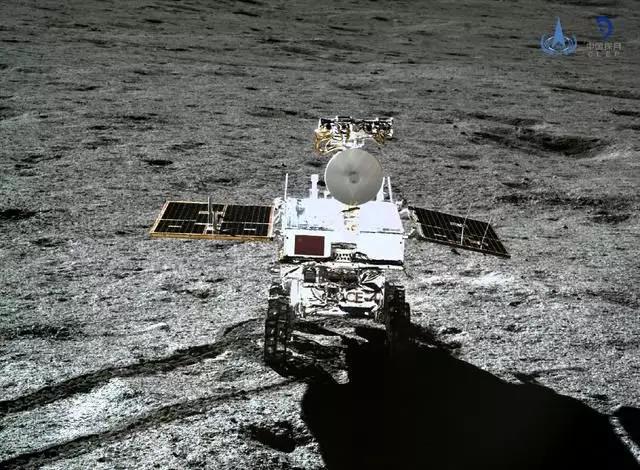
This is my picture, and the one who took the picture is called Lander, and she is my partner. Since I landed on the far side of the moon, people on earth have been through four seasons. After the Spring Festival this year, I returned to work very early and entered the 15th lunar days (a lunar day/lunar night is about 14 days on earth). I’m the moon rover with the longest working hour throughout human’s history! Up till February 19, 2020, I have walked safely on the Moon’s surface for 378.45m accumulatively.
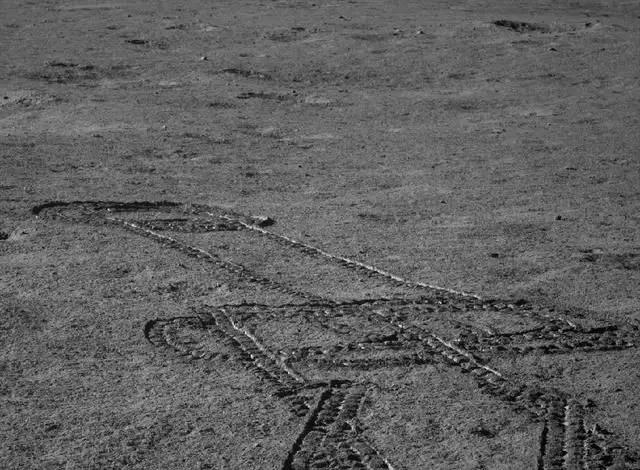
This is the newest picture I took, and while walking, the panorama camera is my “eyes”, and I can take colorful HD picture of the Moon’s surface. The two long “tails” behind my back are lunar penetrating radar, which can detect the thickness and structure of lunar soils, so this “CT” is its credit. The infrared imaging spectrometer can investigate substantial components and available resources on the Moon’s surface.
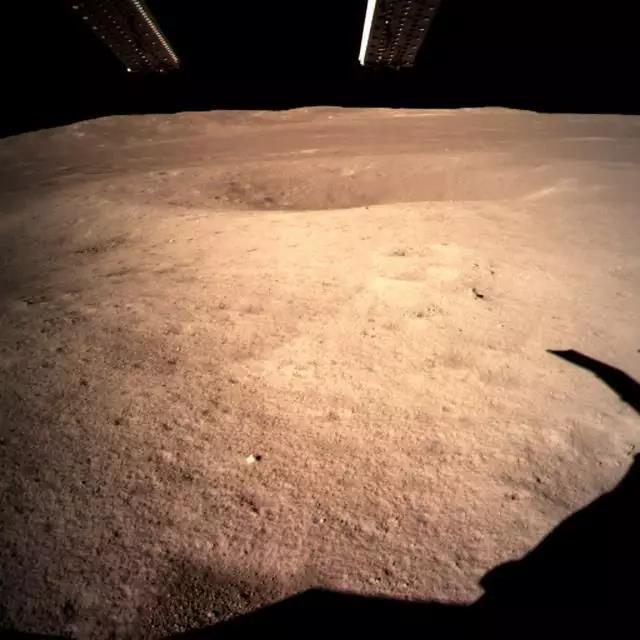
△My partner, “Chang’E-4 Lander” Took the First Close-range Picture of the Moon’s Far Side throughout Human History
During the 9th lunar day, I discovered unclear gelatinoids in the impact crater on the far side of the moon, so the ground operator designed a driving plan, and carried out scientific detection on the depth of the impact crater and its sputtering objects, etc.
While I was wandering, my old partner (Chang’E-4 Lander) left at “Tianhe Base”, to carry out low-frequency electrical observation in an EMI-free environment, while watching me.
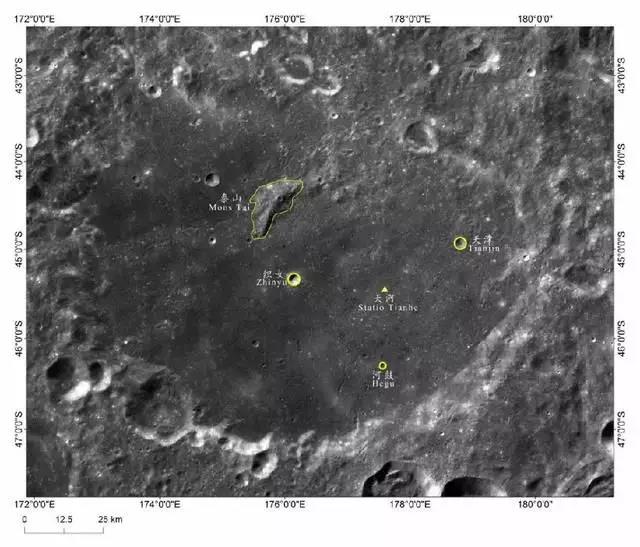
△The Landing Area of Chang’E-4, “Tianhe Base”
Except for that, we are also proud of so many other things!
We realized the relay measurement and control communication between the Moon’s far side and the earth for the first time;
We realized breakthroughs in the safety landing technologies of flexibly avoiding obstacles in the small-range rugged complicated terrain on the far side of the moon;
We firstly realized global layout deep-space network;
We firstly developed and applied isotope power, and realized the continuous measurement of moon surface temperature;
We firstly carried out international cooperation in load carrying and joint detection.
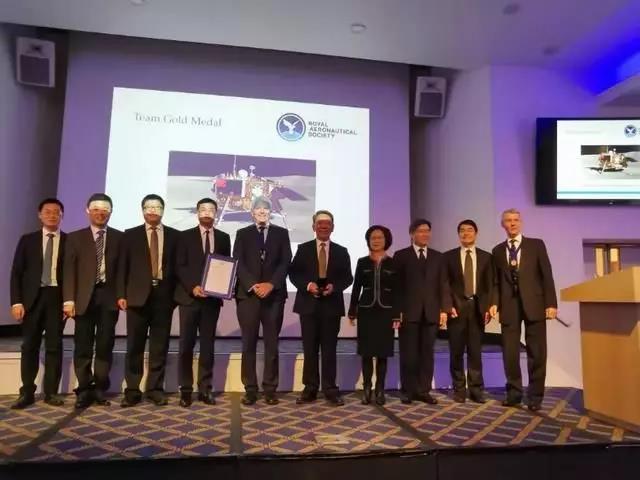
△Royal Aeronautical Society awarded Chang’E-4 Lunar Landing Mission Team
Meanwhile, Chang’E-4 Team also obtained extensive praises nationwide.
Royal Aeronautical Society awarded 2019 Team Gold Medal to Chang’E-4 Lunar Landing Mission Team in November 2019, which was the first time for the Society to award Chinese projects in 153 years since its founding.
China Chang’E-4 Lunar Exploration Task won the Excellent Lunar Exploration Task Award issued by the International Moon Village Association in December 2019, and became the first-batch awarded project of the award.
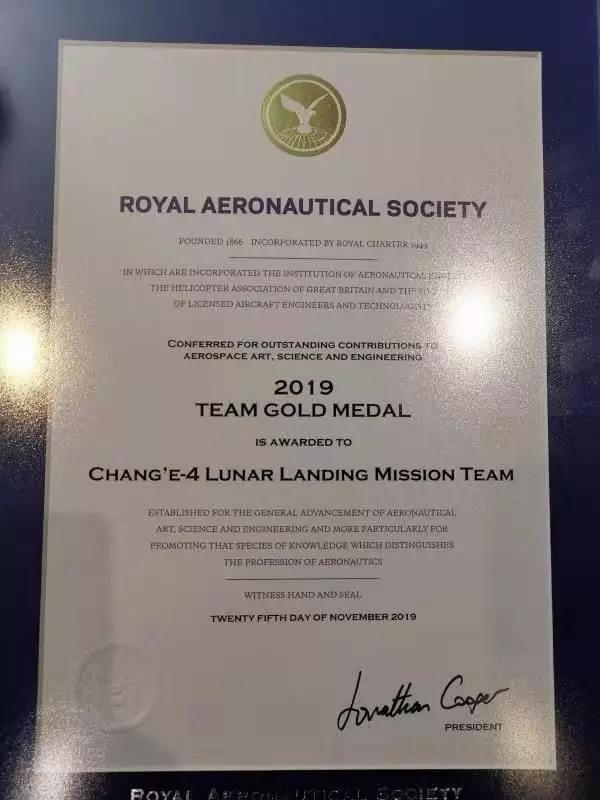
△The Certificate of Chang’E-4 Team
In respect of these achievements, except for Science Advances, lots of other international websites have also paid close attention to me, and some of them have even paid long-term attention to me. Next, I will show you my international bunny fans!
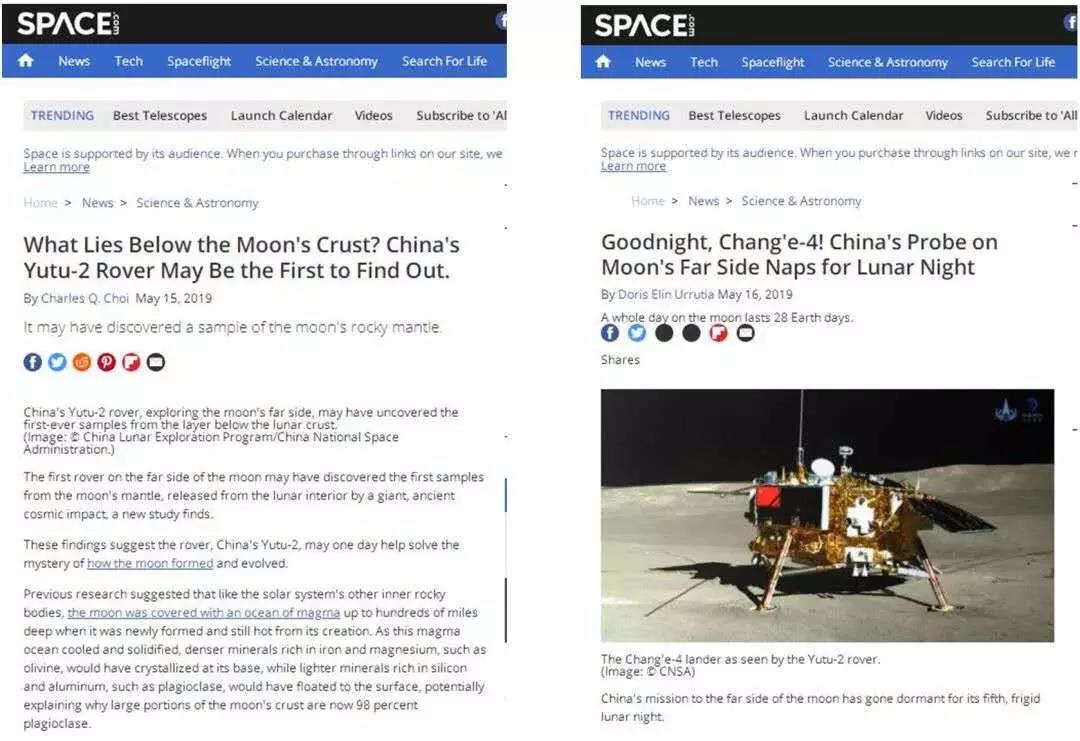
This is my hardcore fan, American Space Website, which has persisted in updating my working records.
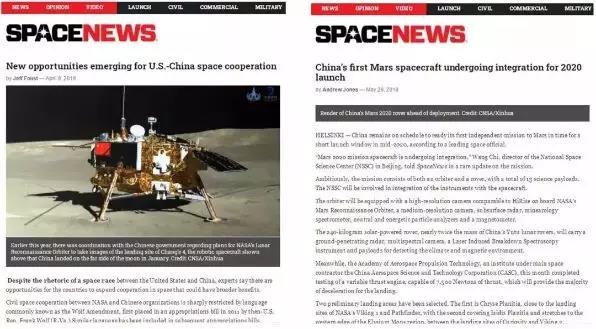
This is my crazy fan, American Spacenews Website, which has paid continuous attentions to “Yutu-2 Driving Journal”.
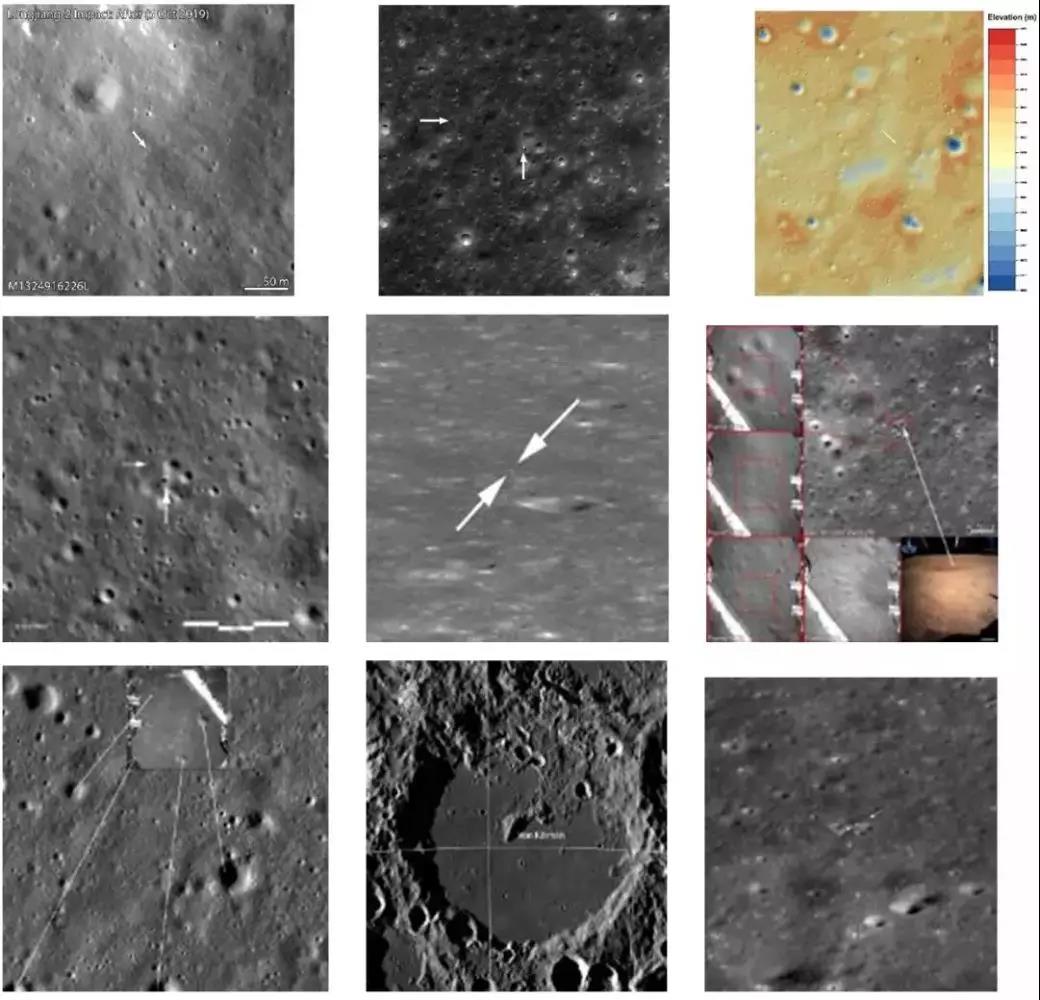
This is my silent fan, National Aeronautics and Space Administration (NASA), which pays comprehensive attention to us by spacecraft.
Although I feel a little bit stressed to see so many passionate fans, I will convert this “idol burden” into my power to go forward.
There is no end in universal exploration, we should always be keen to seek knowledge based on science, seize every minute and leave no regrets. We have created history by landing on the far side of the moon, but this is just a new start. In 2020, I will do my job under the elaborate operation of the drivers, and will never forget my original intention. I will make persistent efforts, match towards the ocean of stars, explore more universal secrets, realize more “heroic undertaking” for China, and make contributions to the development of human’s space exploration career.
source:SAST
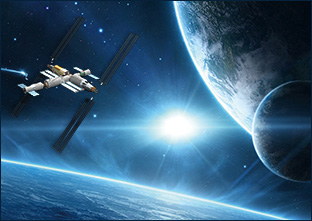
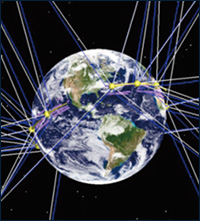
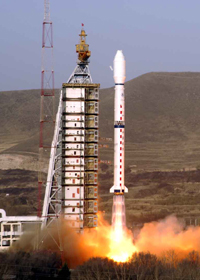
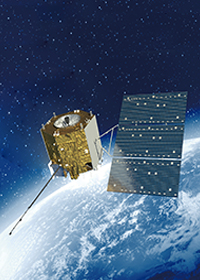

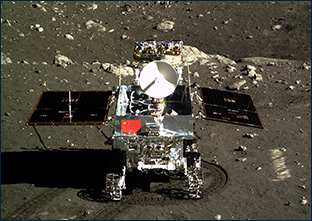
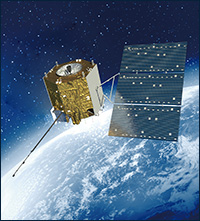

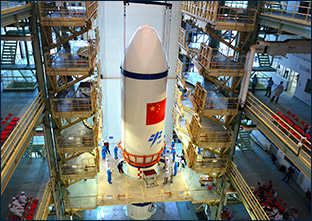



 DOWNLOAD
DOWNLOAD E-MAIL
E-MAIL